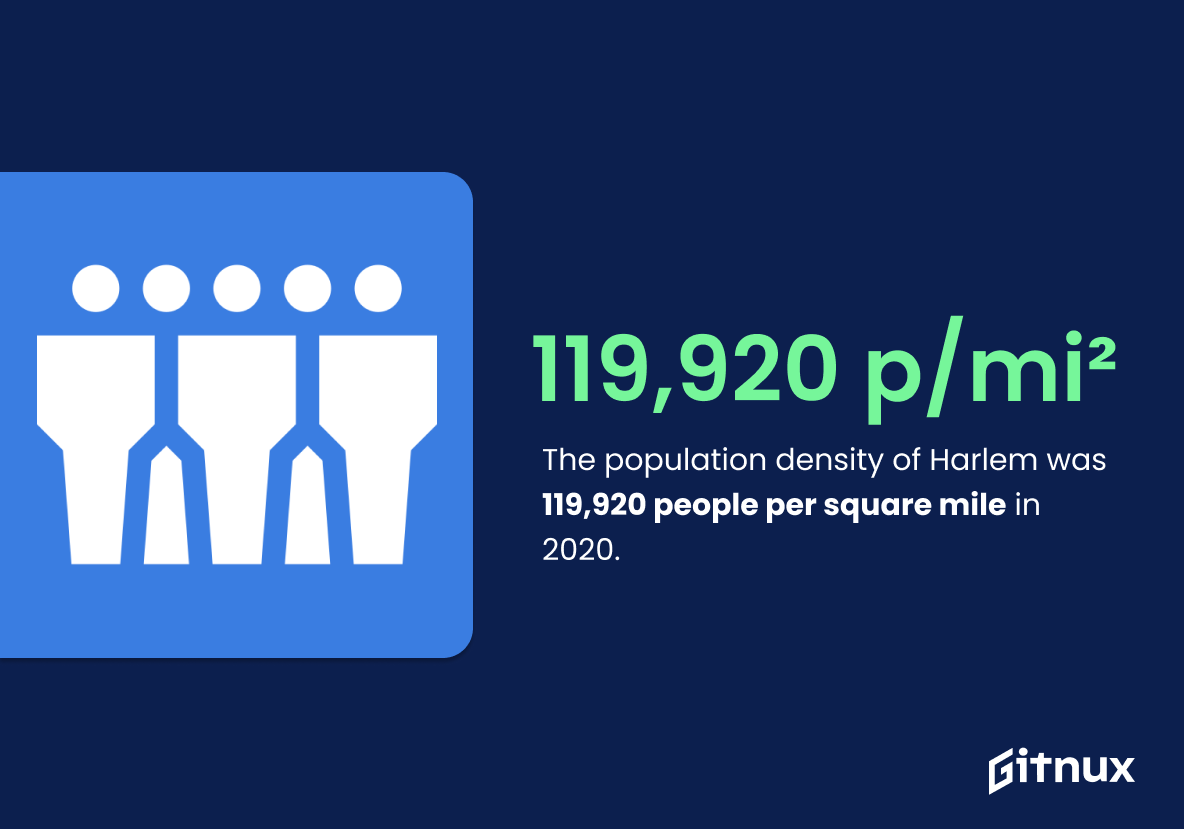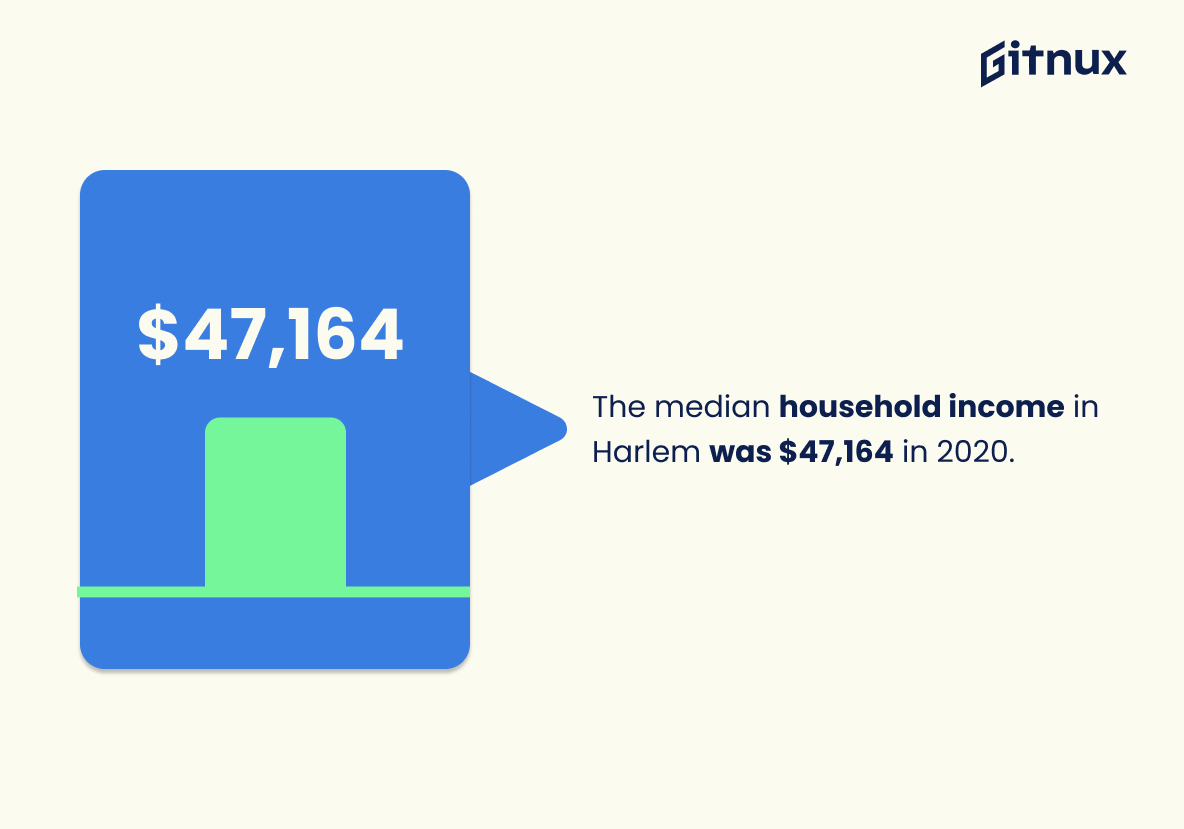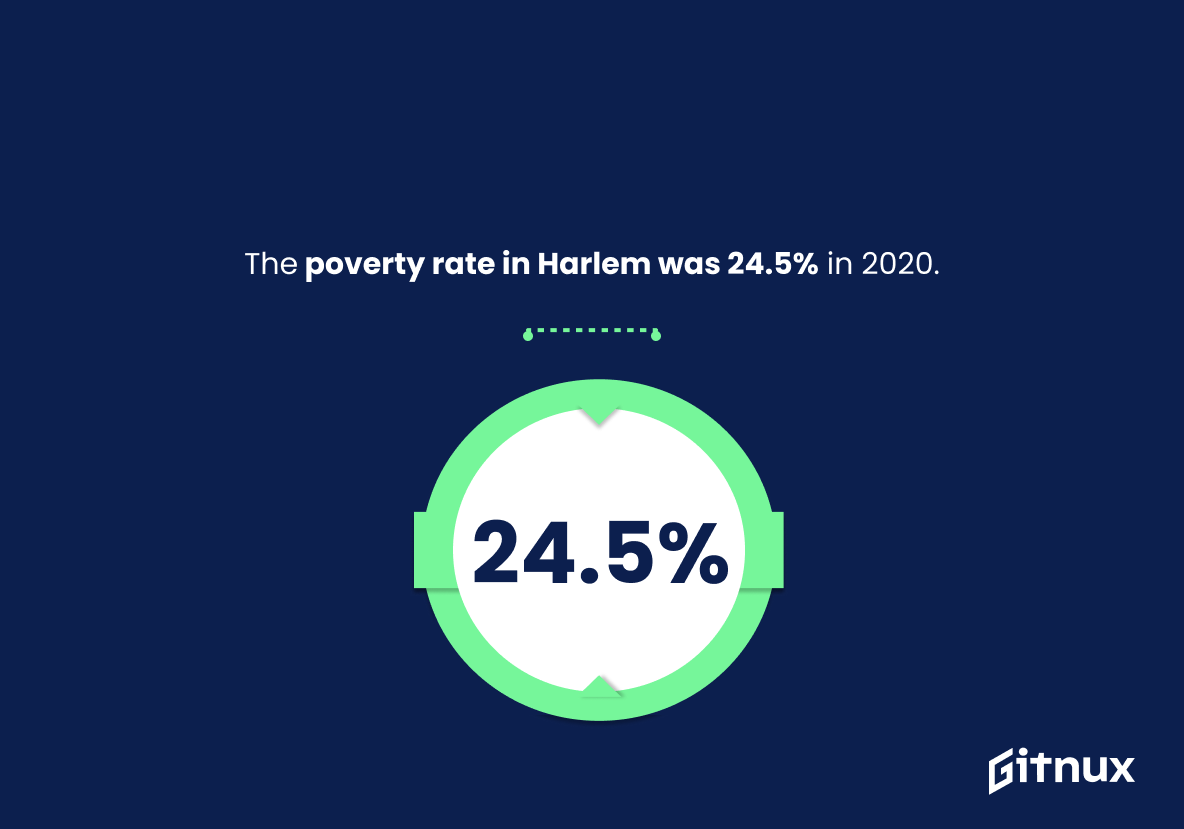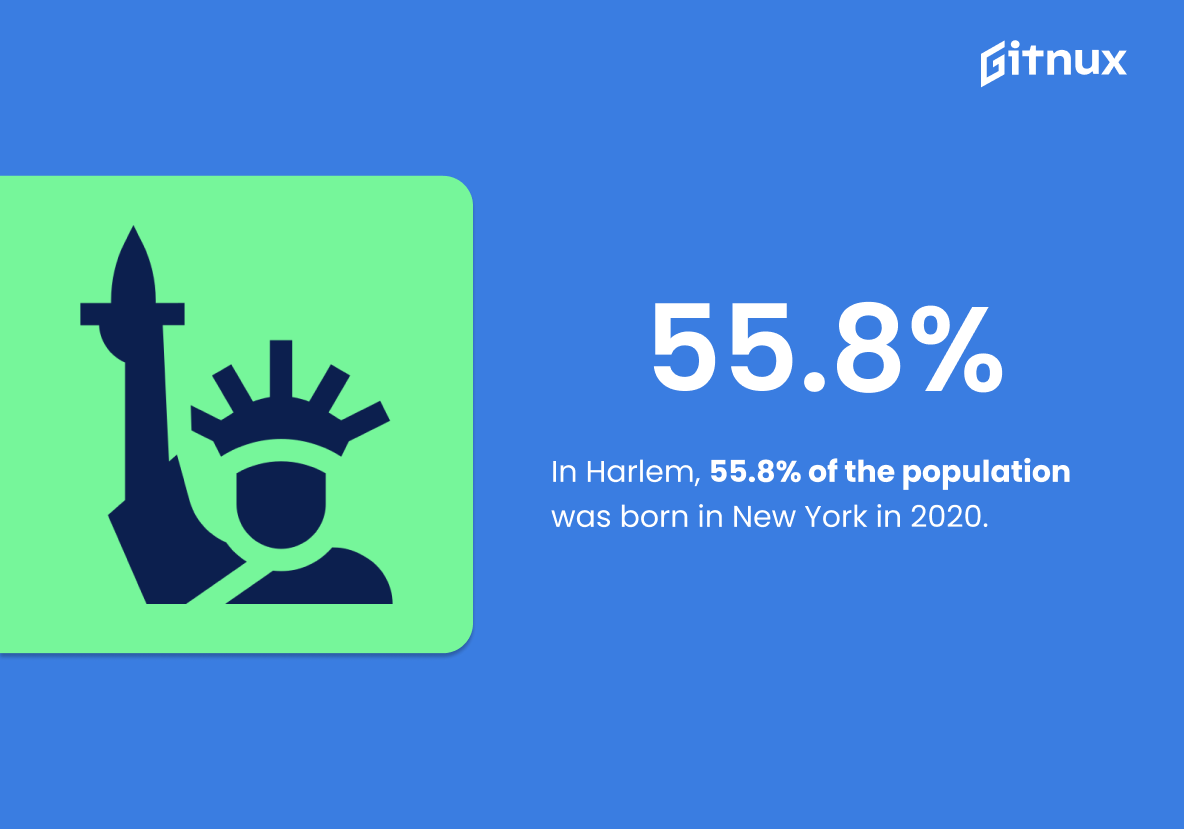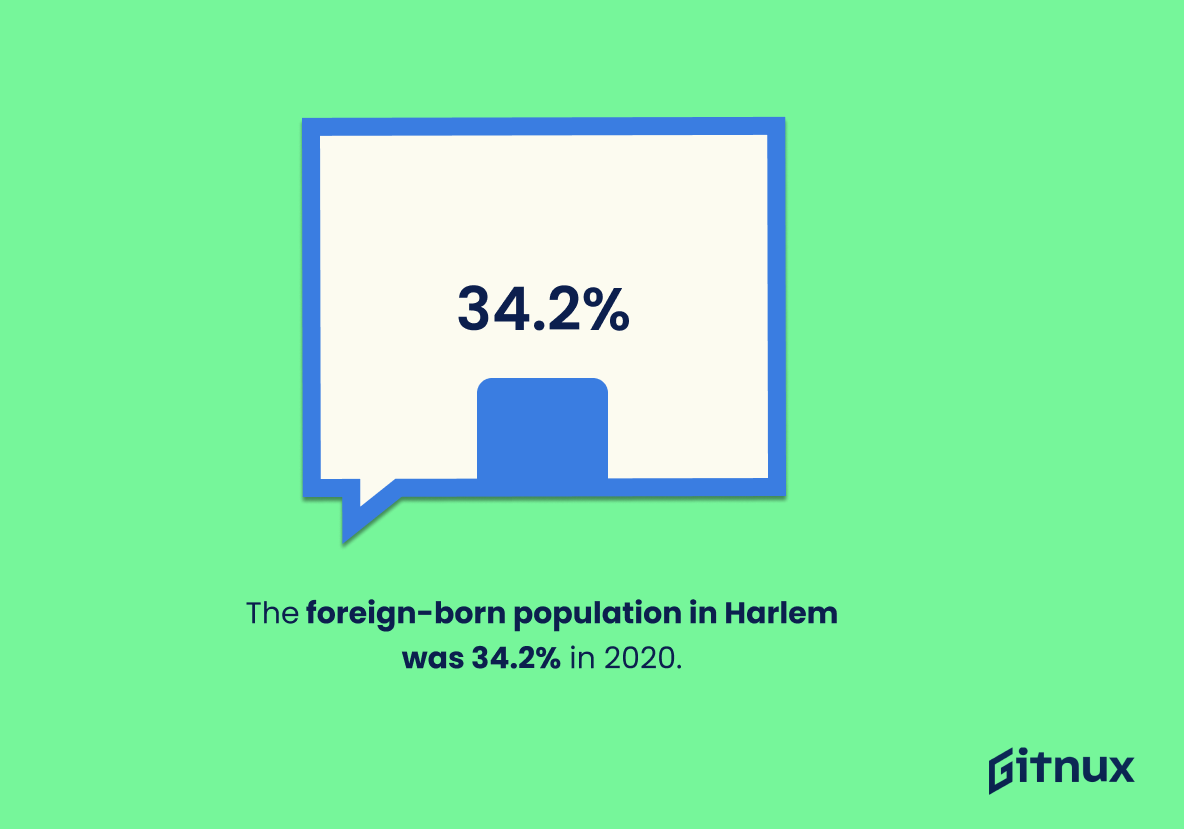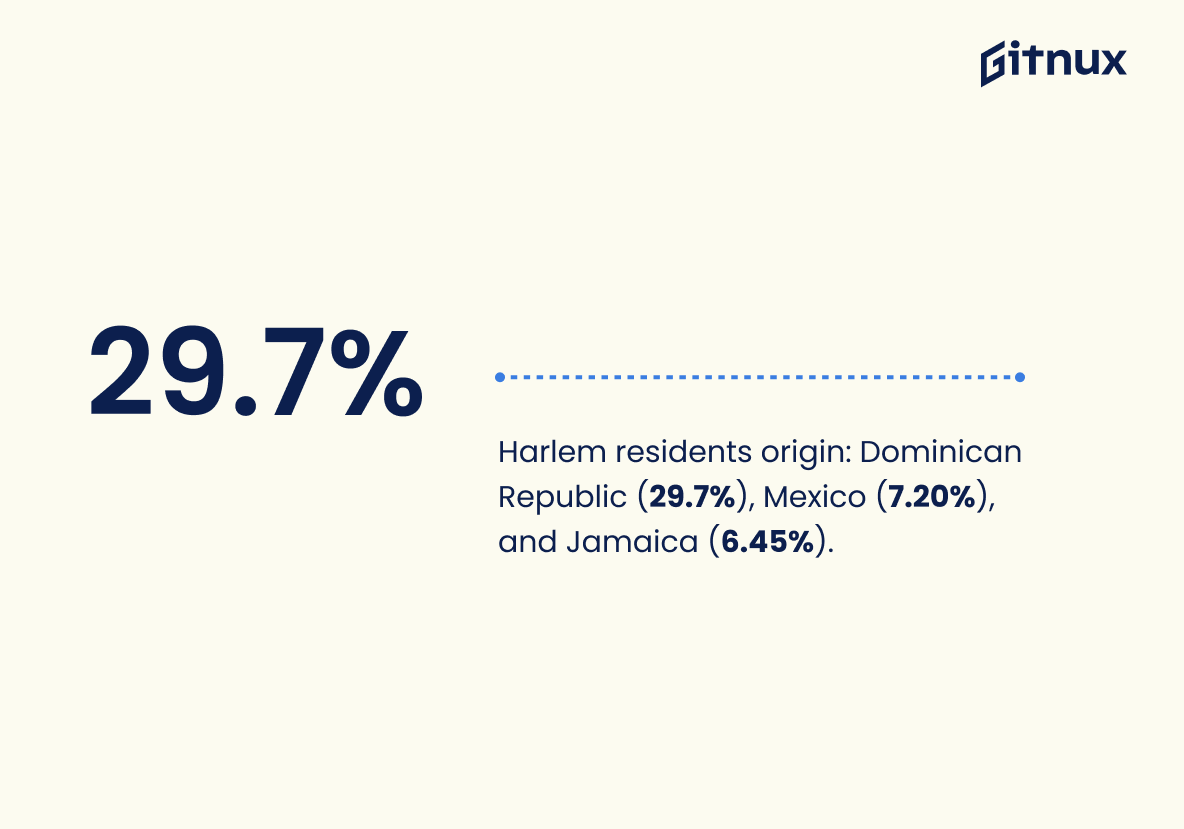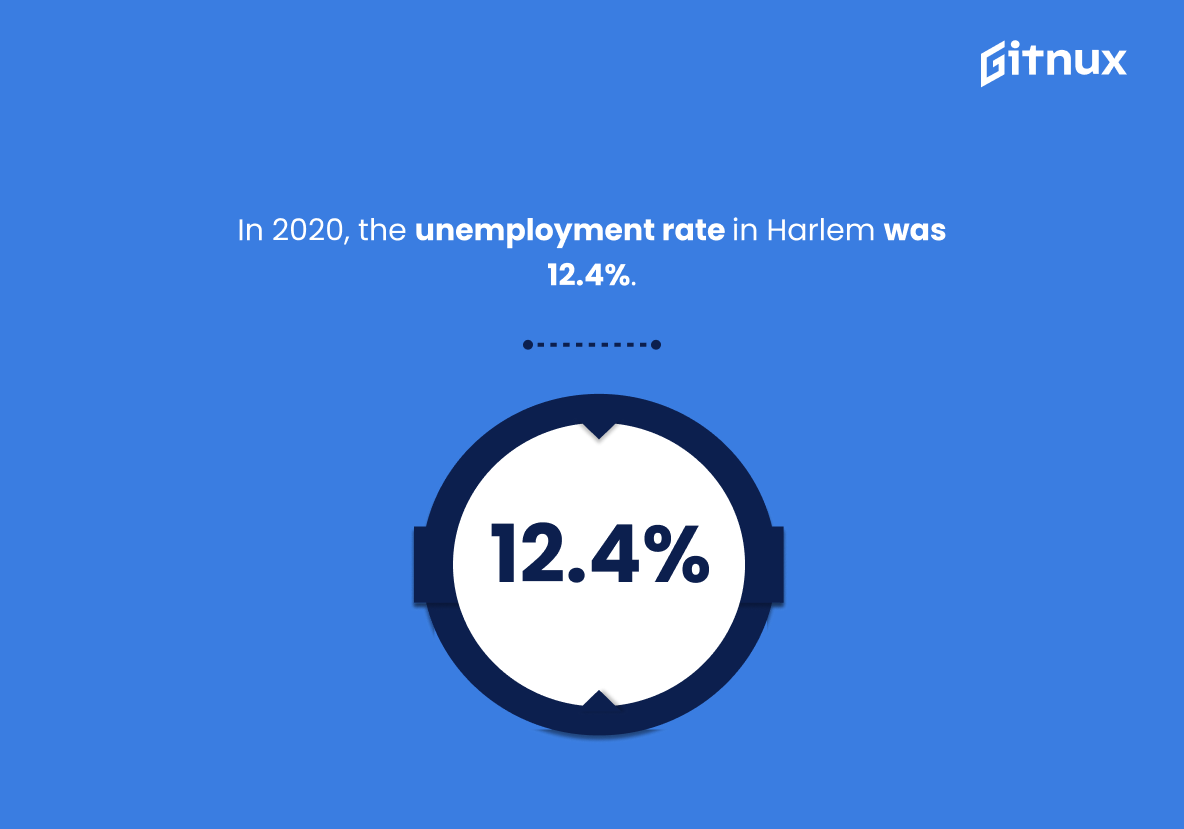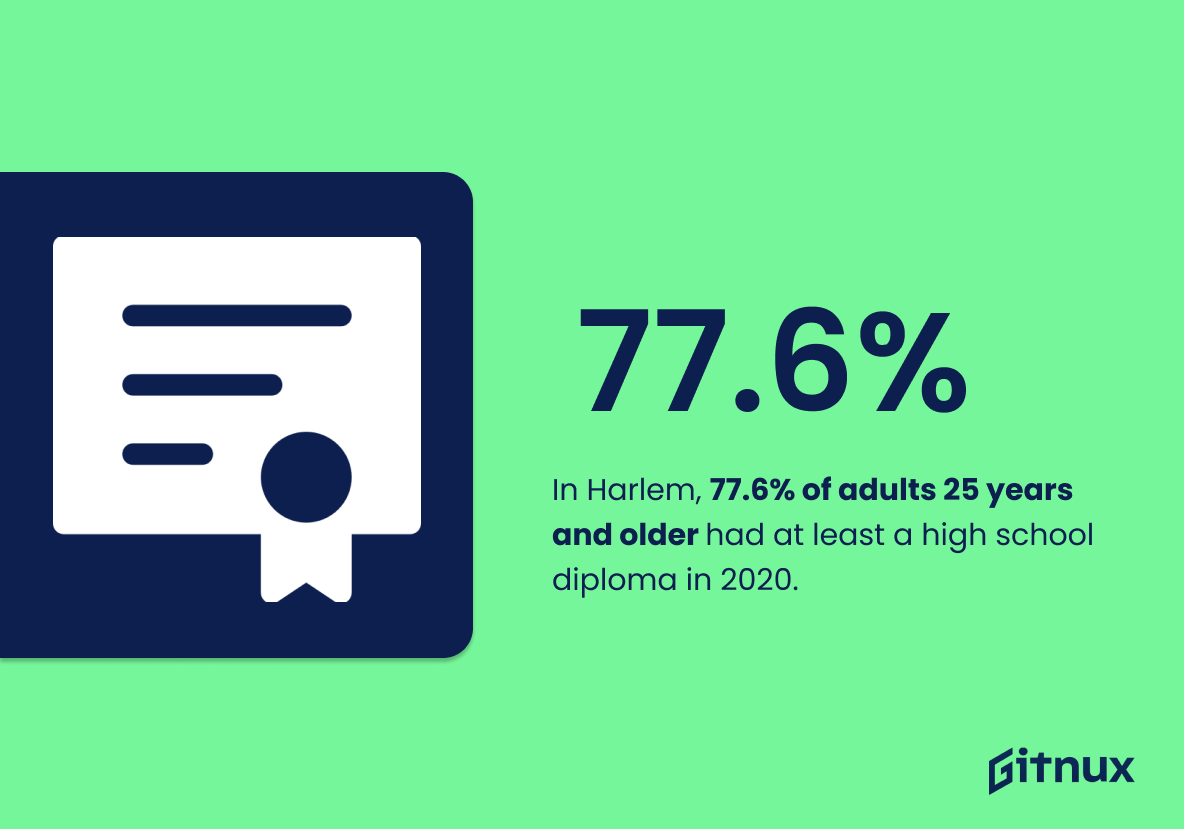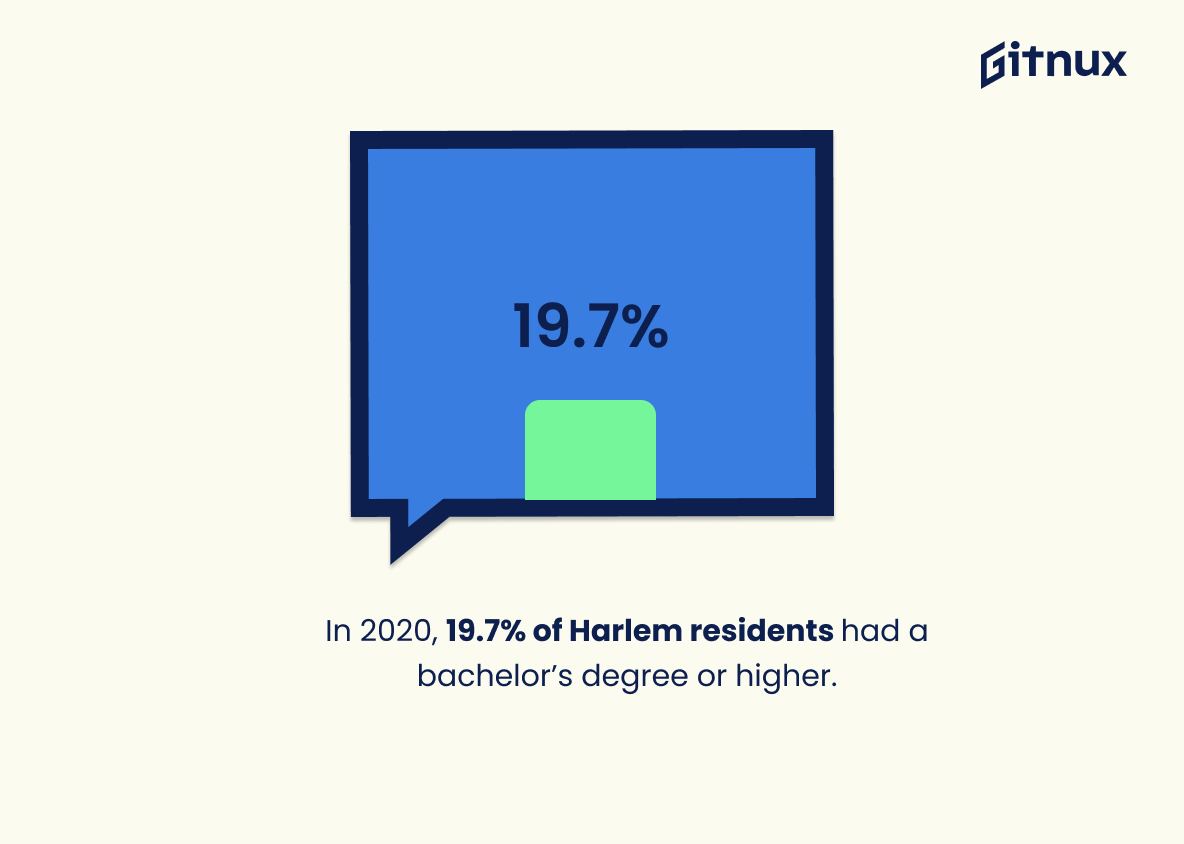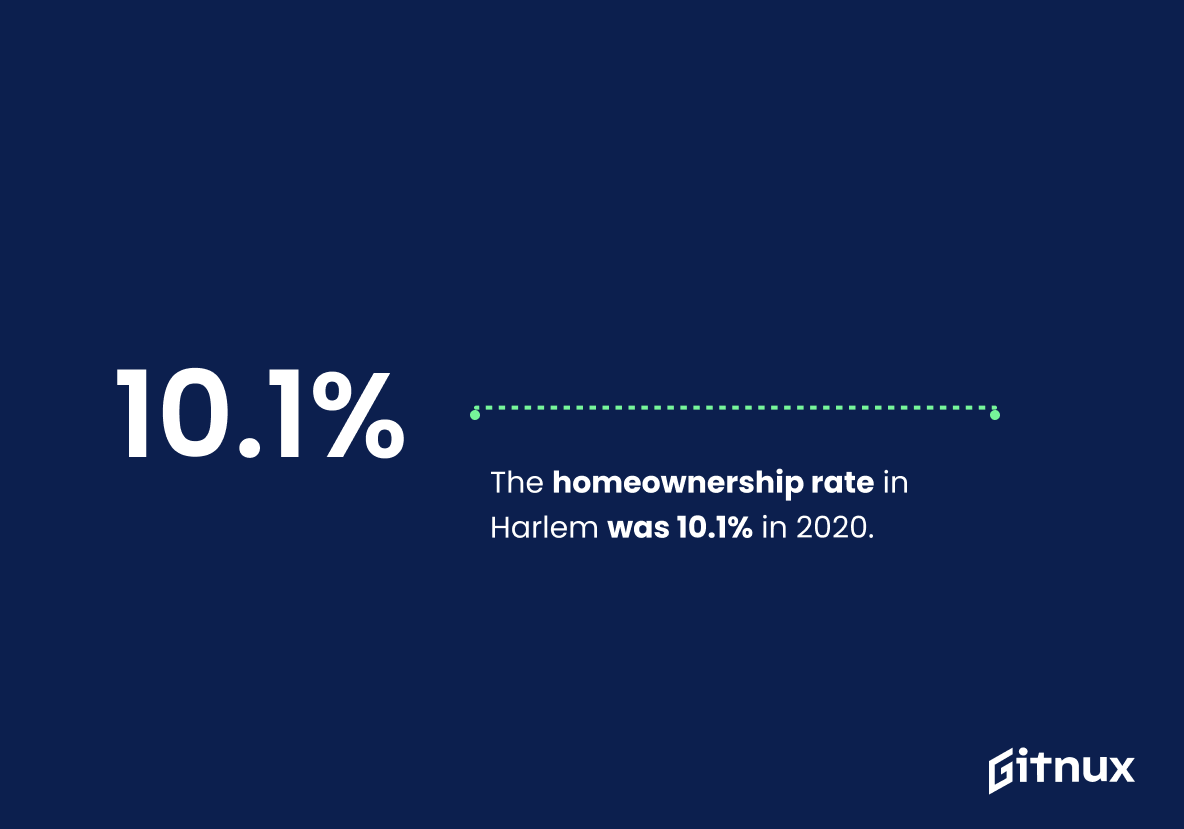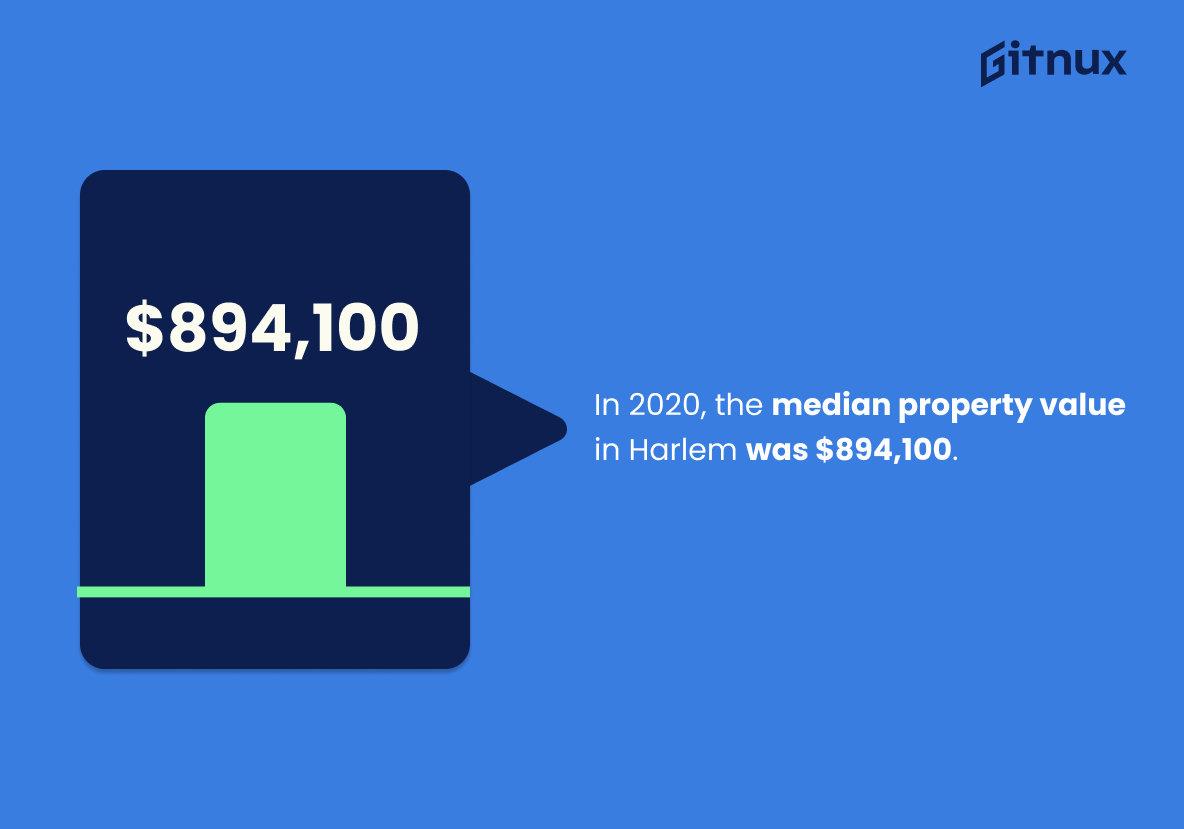Harlem is a vibrant and diverse neighborhood in New York City. It has seen significant growth over the past two decades, with its population increasing by 19.15% from 2000 to 2020. According to recent statistics, Harlem’s population was 60,395 in 2020 and had a density of 119,920 people per square mile that same year.
The demographic makeup of Harlem is also changing rapidly; 39.58% of the population identified as Black or African American, while 47.05% were Hispanic/Latino in 2020 – both higher than their respective national averages for those years (13%, 18%). The white population made up 10.85%, Asian 1
Harlem Population Statistics Overview
The population density of Harlem was 119,920 people per square mile in 2020.
This statistic is a telling indicator of the population density of Harlem in 2020. It provides a snapshot of the area’s population density, which can be used to compare with other neighborhoods and cities. It also gives insight into the amount of resources and services needed to support the population of Harlem. This statistic is an important piece of the puzzle when it comes to understanding the population dynamics of Harlem.
Harlem has a median age of 34.6 years in 2020.
The median age of 34.6 years in 2020 paints a vivid picture of the demographic makeup of Harlem. It reveals that the majority of the population is comprised of individuals in their mid-30s, indicating a relatively young population. This statistic is important to consider when discussing the population of Harlem, as it provides insight into the age range of the people living in the area.
In 2020, the male to female ratio in Harlem was 1:1.19 (47.3% male, 52.7% female).
This statistic is a telling indication of the gender dynamics in Harlem. It reveals that the female population in the area is slightly higher than the male population, which could be indicative of a variety of factors such as the prevalence of single-parent households or the presence of a larger female workforce. This information is essential to understanding the population of Harlem and can be used to inform policy decisions and initiatives that could benefit the community.
The median household income in Harlem was $47,164 in 2020.
This statistic is a telling indication of the financial state of the Harlem community. It provides insight into the average income of households in the area, which can be used to compare the economic standing of Harlem to other neighborhoods. It also serves as a benchmark for understanding the financial resources available to the people of Harlem, and how they are able to support themselves and their families.
The poverty rate in Harlem was 24.5% in 2020.
This statistic is a telling indication of the economic state of Harlem in 2020. It highlights the fact that a significant portion of the population is living in poverty, and serves as a reminder of the need for continued efforts to improve the quality of life for those living in the area.
In Harlem, 55.8% of the population was born in New York in 2020.
This statistic is a telling indication of the deep roots that the people of Harlem have in the city. It speaks to the generations of families that have called Harlem home and the strong sense of community that exists in the area. It also speaks to the resilience of the people of Harlem, who have stayed in the area despite the many challenges they have faced.
The foreign-born population in Harlem was 34.2% in 2020.
This statistic is a telling indication of the diversity of the population in Harlem. It speaks to the fact that the area is home to a wide range of people from different backgrounds and cultures, making it a vibrant and unique place to live. It also highlights the importance of understanding the demographics of the area in order to better serve its residents.
In 2020, the most common foreign countries of origin for Harlem residents were the Dominican Republic (29.7%), Mexico (7.20%), and Jamaica (6.45%).
This statistic is a telling indication of the cultural diversity of Harlem. It reveals that the majority of the population is of Dominican Republic origin, with Mexico and Jamaica following closely behind. This speaks to the vibrant and unique culture of the area, which is a major draw for many people. It also highlights the importance of understanding the different backgrounds of the people living in Harlem, and how this can help to create a more inclusive and welcoming environment.
In 2020, 81.6% of Harlem residents spoke English as their primary language, while 15.6% spoke Spanish.
This statistic is a telling indication of the linguistic makeup of Harlem’s population. It reveals that English is the dominant language spoken in the area, with Spanish being the second most popular. This information is important to consider when discussing the demographics of the area, as it provides insight into the cultural and linguistic diversity of the community.
In 2020, the unemployment rate in Harlem was 12.4%.
The unemployment rate in Harlem in 2020 paints a stark picture of the economic struggles faced by the community. It serves as a reminder of the need for more job opportunities and economic development in the area. This statistic is a key indicator of the overall health of the Harlem population and speaks to the need for more resources to help those who are struggling to make ends meet.
In Harlem, 77.6% of adults 25 years and older had at least a high school diploma in 2020.
The fact that 77.6% of adults 25 years and older in Harlem have at least a high school diploma is a testament to the hard work and dedication of the people in the community. It is a sign of progress and a reminder that education is a key factor in achieving success. This statistic is a powerful indicator of the potential of the people of Harlem and the potential of the community as a whole.
In 2020, 19.7% of Harlem residents had a bachelor’s degree or higher.
The fact that 19.7% of Harlem residents have a bachelor’s degree or higher is a testament to the hard work and dedication of the people in the community. It speaks to the commitment of the residents to bettering themselves and their families, and it shows that Harlem is a place of opportunity and growth. This statistic is a powerful reminder of the potential of the people of Harlem and the potential of the community as a whole.
The homeownership rate in Harlem was 10.1% in 2020.
The homeownership rate in Harlem is a telling statistic that speaks volumes about the population of the area. It reveals the level of economic stability and security of the people living in the area, as well as the amount of investment in the community. This statistic is an important indicator of the overall health of the Harlem population and can be used to inform decisions about the future of the area.
In 2020, the median property value in Harlem was $894,100.
The median property value in Harlem in 2020 paints a vivid picture of the area’s economic standing. It speaks to the financial stability of the neighborhood, and the ability of its residents to purchase and maintain property. This statistic is an important indicator of the overall health of the Harlem community, and provides insight into the quality of life of its inhabitants.
Conclusion
Harlem, a bustling, varied district in New York City, had a population of 60,395 in 2020, a 19.15% increase from 2000. Most residents are Hispanic/Latino (47.05%), followed by Black (39.58%) and White (10.85%). A smaller Asian community exists (1.41%). With 119,920 individuals per square mile, Harlem boasts one of NYC’s highest population densities. The median age is 34, with males and females near evenly split.
The median household income is $47,164, and 24% live impoverished. Most residents (55%) were born in the city, while 35% hail from abroad, mainly the Dominican Republic, Mexico, and Jamaica. English is spoken by 81% as their first language, followed by Spanish at 15%. The unemployment rate is 12%, but 77% have a high school diploma or higher, and 20% possess a bachelor’s degree or higher. Only 10% own homes, with the average property value around $894K.
References
0. – https://www.statista.com
1. – https://www.datausa.io
2. – https://www.nytimes.com
3. – https://www.city-data.com
